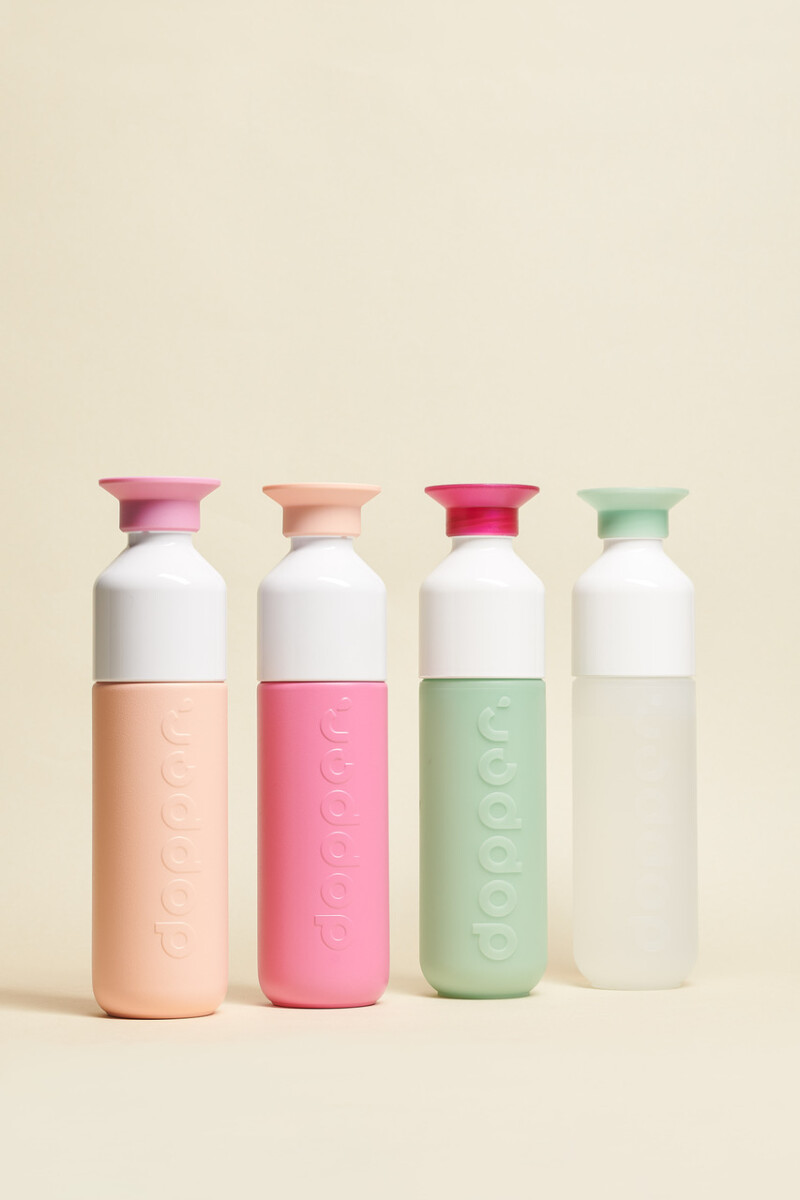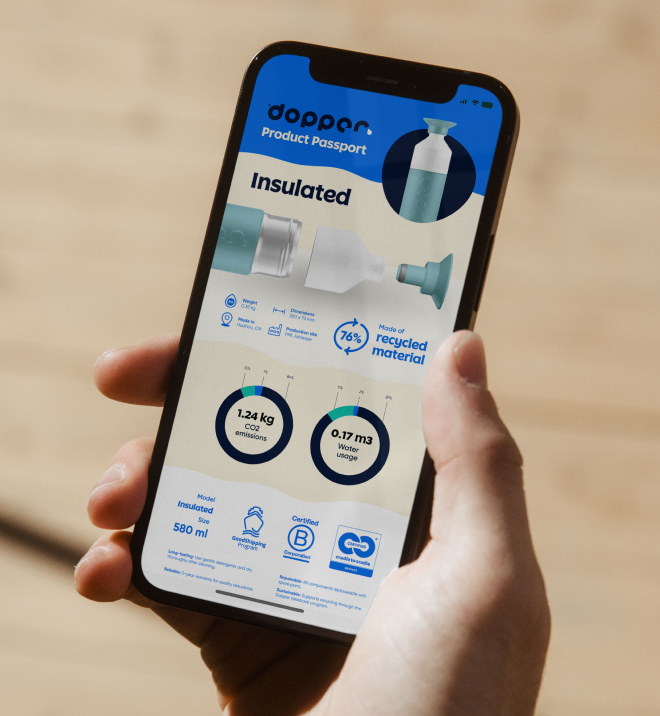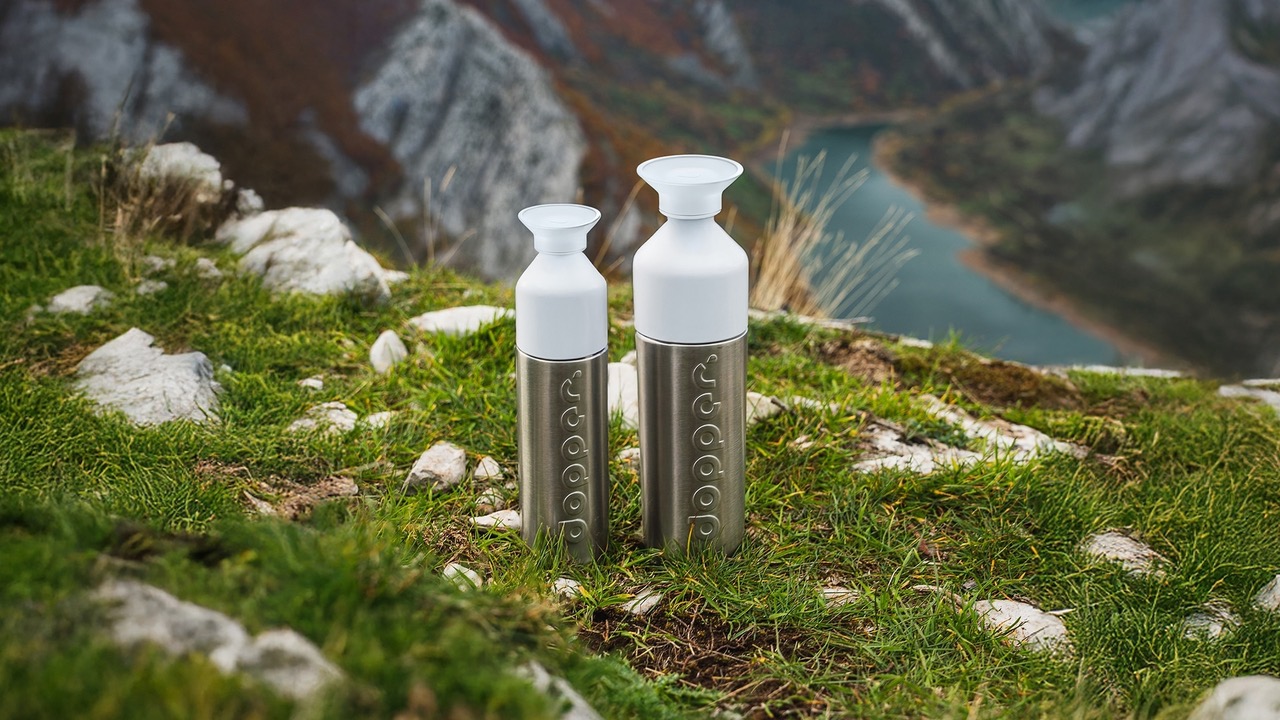No Bottle Wasted: How Dopper is building circularity into every sip
Circularity at Dopper runs deeper than design.

Dopper isn’t just designing reusable bottles. It’s designing out waste. From the very beginning, the Dutch brand set out to challenge single-use plastics by creating a bottle that people would want to carry, reuse, and repair. Today, that mission has evolved into a large, certified product assortment and a supply chain built on transparency, healthy materials, and long-term thinking.
With Cradle to Cradle Certified® Gold, Silver, and Bronze products, repairable parts, and digital tools that detail the materials and processes behind each bottle, Dopper is turning everyday hydration into a lever for circularity. Instead of growing wider with more product lines, the brand is going deeper - improving what already works and proving that a water bottle can do more than hold water. It can hold purpose.
Built to last
At Dopper, circularity runs through every part of the business, shaping how products are developed, how partnerships are chosen, and how systems are built to keep materials in use. A key example is the spare parts program, which allows customers to replace a lost cap, cup, or carrier rather than discarding the entire bottle.
Each bottle also includes a QR code that links to the Digital Product Passport which includes and highlights the value of Cradle to Cradle Certified® design. This allows customers to explore what makes their product circular and why it matters. With over a decade of certification experience across multiple product levels, Dopper continues to demonstrate that true circularity comes from long-term thinking, not short-term claims. This straightforward solution reflects a deeper commitment to designing for longevity and continuous use.
That same mindset defines the supply chain. Dopper collaborates only with suppliers who are ready to innovate on transparency, emissions reduction, and material health. As As the R&D Manager, Niels Heijman, explains, “If a potential partner doesn’t see the value in that, they’re probably not aligned with how we do business.” From product design to day-to-day operations, Dopper works to refine and strengthen its existing systems so that every decision supports a circular economy.

The value of being Cradle to Cradle Certified®
For Dopper, Cradle to Cradle Certified® is not a final goal, but a framework for continuous improvement. It brings structure to how the company designs, sources, and evaluates its products across the five performance categories.
Rather than treating certification as an add-on, Dopper uses it to guide long-term decision-making.
Niels Heijman, shared, “You can’t advance to a higher level unless you meet the baseline in all areas. That’s what makes it useful.” This built-in accountability keeps the focus on progress across the full product lifecycle.
The process itself has helped shape internal systems. Verifying compliance at every level of the supply chain requires deep engagement with suppliers, clear documentation, and ongoing collaboration. For Dopper, this has strengthened relationships and brought new clarity to how circularity can be implemented through real-world operations.
Cradle to Cradle Certified® also plays a role beyond product development. It creates a common language for teams and partners to work from, supporting consistency across design, sourcing, and evaluation. For Dopper, it has become a tool for aligning internal priorities with external expectations - helping to translate circular design principles into measurable actions across the value chain.
As Niels puts it, “It’s not about getting a stamp of approval. It’s about building accountability into every part of the process.”
Refining the loop: Dopper’s next chapter
Dopper’s circularity roadmap builds on what’s already in place. In the near future, the brand will expand its Digital Product Passport to include spare parts information, local recycling guidance, and end-of-use instructions. These additions will give customers clearer tools to keep their bottles in use.
The team is also exploring take-back pilots that bring returned bottles back into the production cycle. One area of focus is reusing polypropylene (PP), the material used in most Dopper products. Internal tests show that reused PP stays within EU food safety limits, but current regulations do not yet allow it for food-contact applications.
As Niels Heijman explained, “Unlocking safe reuse pathways for PP would be a game changer for us and the industry.”
At the same time, Dopper is working to raise more of its portfolio, including the Steel, Insulated, and accessory lines, to Cradle to Cradle Certified® Full Scope Gold certification. Material testing and innovation continue to guide every update, making sure each component meets the highest standards for circularity and performance.
This next chapter is focused on refining what already works, strengthening systems, and advancing solutions that support long-term circular outcomes
Rethinking the bottle, redefining the system
Dopper isn’t redesigning bottles in isolation. It’s reworking the systems behind them - supply chains, material flows, and partnerships - so that circularity isn’t an outcome, but a starting point. Every decision, from spare parts to certification upgrades, reflects a clear principle: longevity over replacement, clarity over claims, and structure over shortcuts.
This is not a sprint to scale. It’s a deliberate path toward a more regenerative model, where everyday products can shape healthier, more intelligent systems - one refill at a time.
